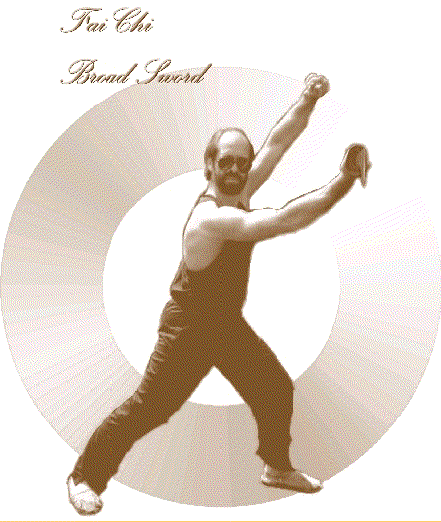
|
EARLY
HERITAGE OF THE T'AI CHI CH'UAN SABRE
|
|||
|
Like
other civilisations there are no clear accounts of early fighting methods
or weaponry in the Chinese stone age. Weapons existed before Chinese
calligraphy was invented and their origins were usually attributed to
early mythical rulers. |
 |
||
| The
sword originated from the pointed stick, a weapon used for throwing
or thrusting, which we know as the spear. If a spear is thrown the enemy
could always throw it back so a hook or barb was introduced to capture the
flesh. In the spear we find the origins of the sword because in fighting
with the spear the top inevitably is broken off and becomes useful as a
dagger. There are many types of spears; double pointed, crest shaped, pronged
and double edged. The first recorded use of a dagger was invented by Chuan
Chu (6th century BC) it was one foot eight inches in length and in even
earlier times the edges were poisoned. Earliest daggers were made of green
jade with a blade three inches wide. A combination of the battle axe with
spear makes the Halberd. The end of a halberd when broken off in battle
gave rise to the broadsword or sabre. The broadsword proper was only really
possible after the development of strong metals. Imagine trying to wield
a sword made from gold and its cutting properties. Eventually the broadsword
developed in two popular forms a short sword which was worn on the side
of the thigh and a long sword worn at the waist. However, the length of the sabre is known to have varied from two to ten feet depending upon its function. Following the Chinese philosophy of yin and yang they were considered either male or female. Sometimes honorary titles and supernatural powers or attributes were ascribed to exceptional swords such as shining in the dark or the ability to cut jade without dulling the edge. From the time of the Chin and Sung dynasties the emperors sword had a black sheath adorned with silver and golden flowers. The sabre was decorated extensively, ornamentation usually consisted of naturalistic scenes. Many of the ritual and ceremonial swords having engravings of figures of dragons birds, flowers, bears and symbolic seals. In early military thinking the sabre was seen as an important agent of peace. |
 |
||
CORE TECHNIQUESThe core techniques involve parrying to the eight directions both above and below, hacking, slashing, pressing, pushing, encircling, slapping, binding, using the pummel and guard to strike and disable. Hooking is an unorthodox though effective technique at an advanced level. Some of the Tai Chi Chuan open hand set techniques would be naturally incorporated as and when required such as kicking, single/double punch and shoulder stroke being most common. A distinctive sabre technique which is typical of the grace and flow of Tai Chi Sabre can be seen in the Neck Flower. The sword player employs this four corner technique by spiralling the sword down and around the back of the body covering above and below with the dull edge towards to body to deflect attacks from the eight directions.
In sabre play the emphasis is on the development of sticking energy to connect with and redirect an opponents attack. Sabre technique can be considered as a natural extension of pushing hands technique. Realistic development of the sabre is dependant on flexibility, dexterity, lightness, and the extension and contraction of energetic awareness without the preoccupation of handling a "weapon". |
|||
GUIDELINES
FOR PRACTISE
|
|